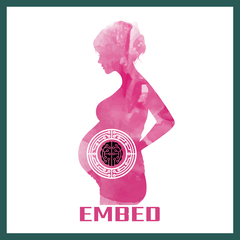Anorexia nervosa (AN), bulimia nervosa (BN), and obsessive-compulsive disorder (OCD) are complex psychiatric disorders with shared obsessive features, thought to arise from the interaction of multiple genes of small effect with environmental factors. Potential candidate genes for AN, BN, and OCD have been identified through clinical association and neuroimaging studies; however, recent genome-wide association studies of eating disorders (ED) so far have failed to report significant findings. Additionally, few if any studies have interrogated postmortem brain tissue for evidence of eQTLs associated with candidate genes, which has particular promise as an approach to elucidating molecular mechanisms of association. We therefore selected single nucleotide polymorphisms (SNPs) based on candidate gene studies for AN, BN, and OCD from the literature, and examined the association of these SNPs with gene expression across the lifespan in prefrontal cortex of a non-psychiatric control cohort (N=268). Several risk-predisposing SNPs were significantly associated with gene expression among control subjects. We then measured gene expression in the prefrontal cortex of cases previously diagnosed with obsessive psychiatric disorders, e.g., eating disorders (ED; N=15), and obsessive-compulsive disorder/obsessive-compulsive personality disorder or tics (OCD/OCPD/Tic; N=16), and non-psychiatric controls (N=102) and identified 6 and 286 genes that were differentially expressed between ED compared to controls and OCD cases compared to controls, respectively (FDR < 5%). However, none of the clinical risk SNPs were among the eQTLs and none were significantly associated with gene expression within the broad obsessive cohort, suggesting larger sample sizes or other brain regions may be required to identify candidate molecular mechanisms of clinical association in postmortem brain datasets.
Gene expression data from the dorsolateral prefrontal cortex (DLPFC) from postmortem tissue on 133 subjects - 15 eating disorder (ED) patients, 16 obessive compulsive disorder (OCD) patients, and 102 non-psychiatric controls - run on the Illumina HumanHT-12 v3 microarray
